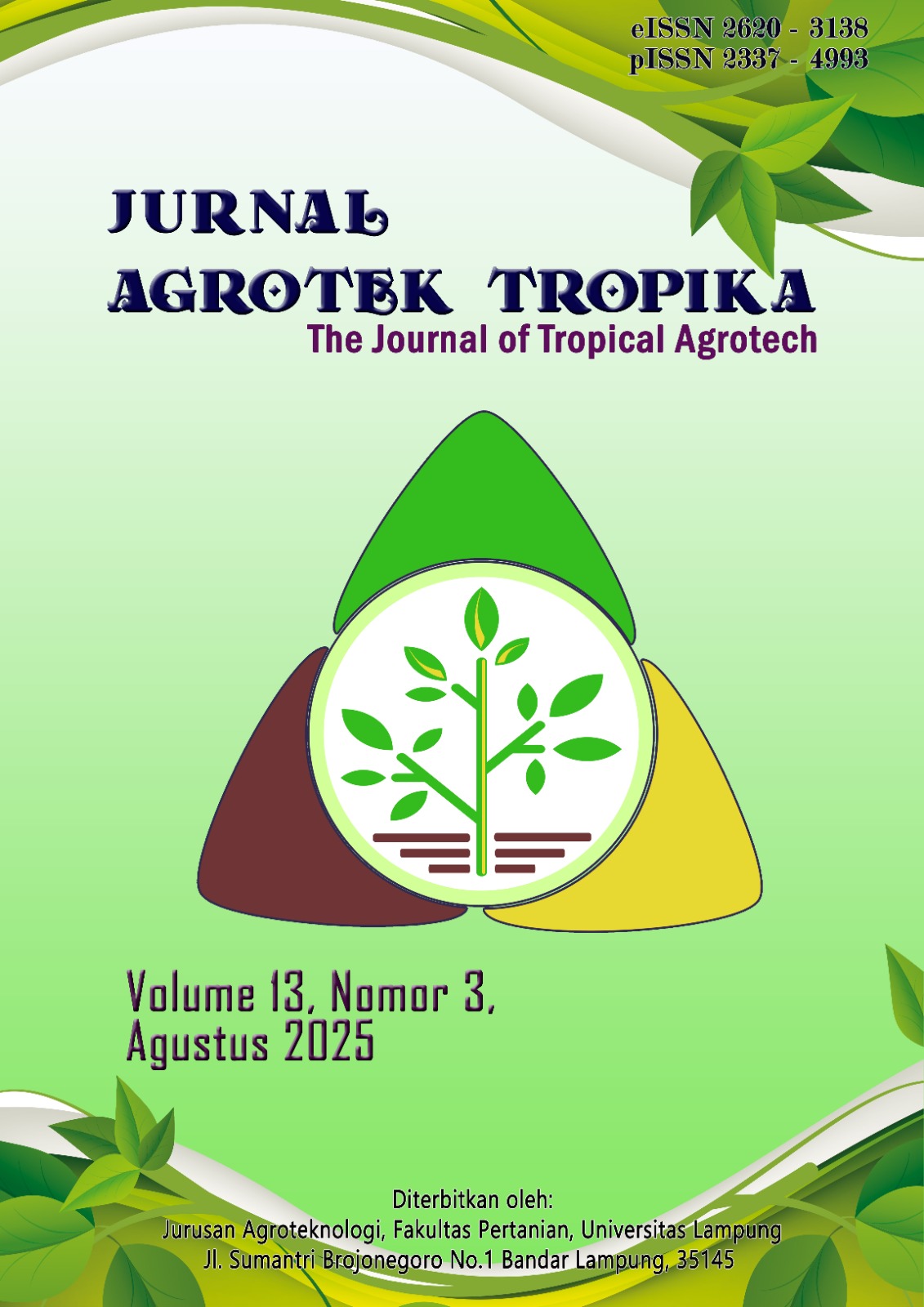FUNGICIDE SENSITIVITY OF XYLARIA ISOLATES ASSOCIATED WITH ROOT AND BASAL STEM ROT OF SUGARCANE
DOI:
https://doi.org/10.23960/jat.v13i3.10665 Abstract View: 3
Abstract View: 3
Keywords:
Pengendalian, Pestisida nabati, Fungisida sintetikAbstract
Root and basal stem rot is one of important diseases in sugarcane plantations in South Sumatra and Lampung. This disease is caused by Xylaria sp. The study is aimed to determine the fungicides sensitivity of Xylaria sp. which is associated with root and stem rot disease of sugarcane. The Xylaria sp. was isolated from the stroma and diseased sugarcane stems obtained from PT Gunung Madu Plantations (GMP). The fungicides used were plant base fungicides (puyangan and jamuan) and synthetic fungicides (carbendazim, mancozeb, and chlorothalonil). The Xylaria sp. sensitivity test was carried out by the poison food technique. The doses used are; puyangan and jamuan (10 g/100 mL), carbendazim (2 g/L), mancozeb (3 g/L), and chlorothalonil (1 g/L). The rate of sensitivity change of Xylaria sp. on fungicides was test by subculturing the Xylaria sp. in media containing fungicides at a dose of 9 g/100mL (puyangan and jamuan), 0.1 g/L (carbendazim), and 0.5 g/L (mankozeb) three times. The results showed that the Xylaria sp. which is associated with root and basal stem rot disease of sugarcane is still very sensitive to fungicides puyangan, jamuan, carbendazim, and mancozeb at recommended doses, but is very resistant to chlorothalonil on 2x the recommended dose. The results of the rate of change in sensitivity of Xylaria sp. to fungicides showed that isolate A tended to change more quickly compared to isolate B and isolate C.
Downloads
Published
How to Cite
Issue
Section
License
Copyright (c) 2025 Rosa Indriani, Tri Maryono, Rusdi Evizal, Joko Prasetyo

This work is licensed under a Creative Commons Attribution 4.0 International License.
Jurnal Agrotek Tropika (JAT) is licensed under a Creative Commons Attribution 4.0 International License.
The copyright holder is the author. Authors publishing under any license allowed by the journal retain the copyright and full publishing rights without restrictions.
The Creative Commons Attribution 4.0 International (CC BY 4.0) license allows users to copy, distribute, and adapt the work, even for commercial purposes, as long as proper attribution is given to the original creator. This is a highly flexible license that encourages widespread dissemination and use of creative works, supporting innovation and collaboration across various fields.











